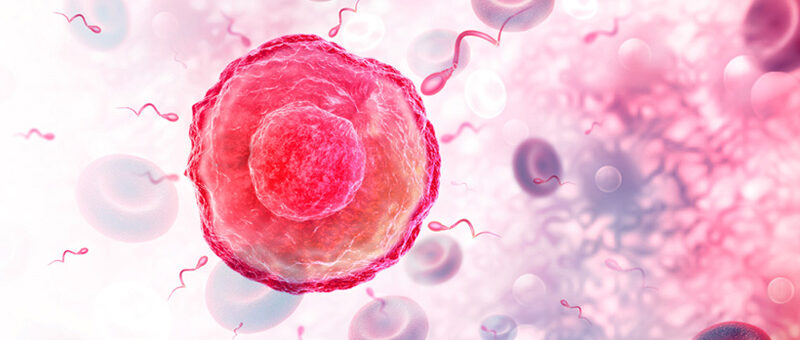
CELL BALANCE AND FERTILITY
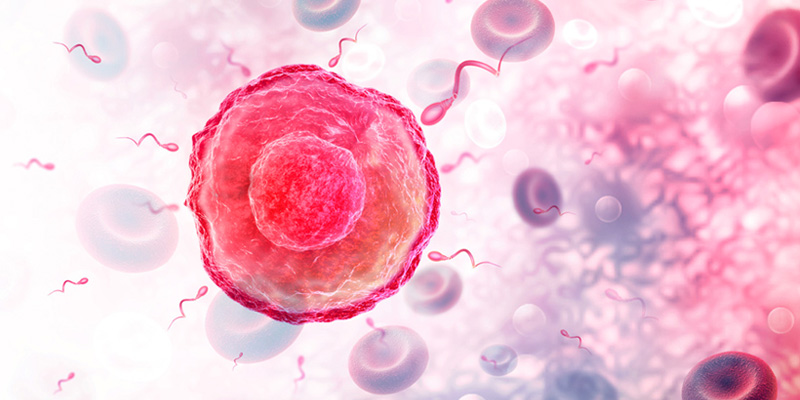
Fertility: why the cell membrane and its fats are important
Since always, the concept of fertility has been linked to the favourable outcome of living species, not only because of the obvious connection with evolution and reproduction, but also because of the symbolic meaning of Life beginning in the womb of a woman as a sign of absolute positivity, victory over difficulties and, of course, death.
In practical and modern terms, fertility is the “PRODUCTIVE” meeting of two cells, the female cell (OVULO) and the male cell (SPERMATOZOO), which interact with each other with the penetration of the male cell into the female cell through their respective cell membranes. And it is precisely on the properties of cell membranes that we wish to dwell.
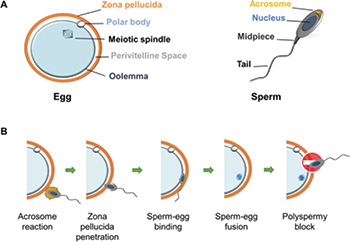
As seen in the figure, the spermatozoon enters the “sphere of interaction” of the egg, carrying out an oxidative reaction with its tip (acrosome) to penetrate the zona pellucida, bind and enter by a FUSION mechanism between the sperm membrane and oocyte membrane (Bianchi E, Wright GJ (2020) Find and fuse: Unsolved mysteries in sperm–egg recognition. PLoS Biol 18(11): e3000953. https://doi.org/10.1371/journal.pbio.3000953).
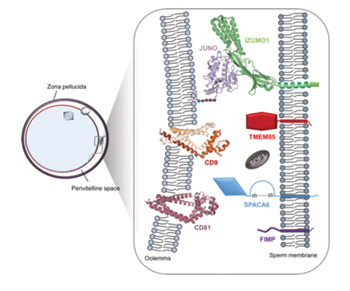
The two membranes, that of the sperm cell and that of the oocyte, fuse well only if the structures have suitable properties of fluidity and permeability, guaranteed by the precise organization of phospholipids and cholesterol (second figure, rif. lavoro Plos Biol 2020).
Like all cells in our tissues, male and female reproductive tissue must adhere to an EQUILIBRATION between saturated and unsaturated fats (and cholesterol accordingly) to ensure fluidity and permeability of structures in a manner consonant with fertility. Among the unsaturated fats, essential fats (polyunsaturated omega-6 and omega-3) play an important role because their quantity in the membranes of sperm and oocyte determines precisely the success of the interaction phases between these two cells.
Scientific knowledge about the combination of fertility and lipids
What does scientific knowledge say about fertility and fat? The following is a list of scientific certainty:
- dietary intake of adequate amounts of omega-6 and omega-3 fatty acids influences the rate of ovulation, the number and size of ovarian follicles, and the production of progesterone from the corpus luteum (Abayasekara DR, Wathes DC. Effects of altering dietary fatty acid composition on prostaglandin synthesis and fertility. Prostaglandins Leukot Essent Fatty Acids. 1999 Nov;61(5):275-87), and the proper morphology of sperm cells (A. Lenzi, L. Gandini, V. Maresca, R. Rago, P. Sgrò, F. Dondero, M. Picardo, Fatty acid composition of spermatozoa and immature germ cells, Molecular Human Reproduction, Volume 6, Issue 3, March 2000, Pages 226–231);
- cases of idiopathic male infertility (without apparent physical-pathological impediment) are related to LACK of omega-3 fatty acid DHA (Aksoy Y, Aksoy H, Altinkaynak K, Aydin HR, Ozkan A. Sperm fatty acid composition in subfertile men. Prostaglandins Leukot Essent Fatty Acids. 2006 Aug;75(2):75-9), as well as to the imbalance of omega-3 (deficient) with omega-6 (excess), verified at the level of the cell membrane of both spermatozoa and mature red blood cell isolated from these subjects (G.R. Mendeluk, M.I. Cohen, C. Ferreri, C. Chatgilialoglu. Nutrition and Reproductive Health: Sperm versus Erythrocyte Lipidomic Profile and -3 Intake. Nutr. Metabol. 2015, 2015, Article ID 670526);
- antioxidant balancing (not deficient, not excessive) is linked to the success of the fertilization moment, because in this process a natural increase in oxidation reactions takes place (the acrosome reacts by producing hydrogen peroxide to penetrate), but excess of oxidative phenomena or deficiency of antioxidants are also deleterious to fertility (Agarwal A, Saleh RA, Bedaiwy MA. Role of reactive oxygen species in the pathophysiology of human reproduction. Fertil Steril. 2003 Apr;79(4):829-43; Falk R. Ochseedorf, Roland Buhl, Anke Bästlein, Heike Beschmann, Glutathione le spermatozoa and seminal plasma of infertile men, Human Reproduction, Volume 13, Issue 2, 1 February 1998, Pages 353–359; Aitken RJ, Baker MA. Oxidative stress, sperm survival and fertility control. Mol Cell Endocrinol. 2006 May 16;250(1-2):66-9; R. John Aitken, Jordana K. Wingate, Geoffry N. De Iuliis, Adam J. Koppers, Eileen A. McLaughlin, Cis-Unsaturated Fatty Acids Stimulate Reactive Oxygen Species Generation and Lipid Peroxidation in Human Spermatozoa, The Journal of Clinical Endocrinology & Metabolism, Volume 91, Issue 10, 1 October 2006, Pages 4154–4163);
- in one of the largest studies with follow-up of 26.971 women and identification of 438 cases of ovulatory infertility, it was verified that total fat intake from the diet is inversely correlated with infertility risk (especially monounsaturated and omega-6 fats), increased intake of trans fatty acids is correlated with increased risk of infertility (2% increase in energy intake from TFA instead of unsaturated carbohydrates and oils leads to 94% increase in infertility risk), while there is an intricate relationship between fertility and polyunsaturated fatty acid degradation by oxidative stress (Chavarro JE, Rich-Edwards JW, Rosner BA, Willett WC. Dietary fatty acid intakes and the risk of ovulatory infertility. Am J Clin Nutr. 2007 Jan;85(1):231-7).
Influence of diet on fertility
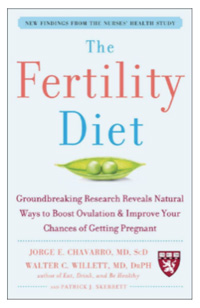 Choosing for a healthy diet, which obviously includes the quality and quantity of fats, has long been identified as pivotal to fertility, as and is reported in the book THE FERTILITY DIET, based on U.S. women’s population study (Nurse’s Health Study), originally published in 2007, and later followed by many other books that appeared in Italy and other countries.
Choosing for a healthy diet, which obviously includes the quality and quantity of fats, has long been identified as pivotal to fertility, as and is reported in the book THE FERTILITY DIET, based on U.S. women’s population study (Nurse’s Health Study), originally published in 2007, and later followed by many other books that appeared in Italy and other countries.
No pro-fertility approach can exclude getting to the heart of the food choices of individuals who wish to overcome the uncertainty of being fertile or not. Also, because any strategy that is carried out cannot be conducted without PERSONALIZATION, i.e., recognizing the deficiency/balance condition of each individual in the couple, and directing the intervention in a targeted, synergistic and holistic manner to create the most favourable cellular environment for the sperm-oocyte encounter that has been described above.
In conclusion, on the choice of fats and the view of the cell membrane comes to the aid of…
the mature red blood cell (mature erythrocyte), the cell that provides very accurate information about the balanced condition or presence of deficiencies in all tissues, including reproductive tissues.
Lipidomic analysis of mature erythrocyte membrane is a precision and personalized medicine tool, which today is an ideal complement to fertility strategies, whether by natural or artificial methods, adhering to the principle that “a healthy cell can maximize its fertility potential“.
Read more in LipiMagazine:
- Essential fatty acids in the first 1000 days of life www.lipinutragen.it/en/early-years-of-life-and-essential-fats/
- Role of omega-3 DHA in pregnant woman www.lipinutragen.it/en/the-role-of-dha-in-pregnancy/
Article edited by the Lipinutragen Editorial Group in collaboration with Dr. Carla Ferreri, CNR Director in Bologna and Scientific Director of Lipinutragen
The information reported should in no way replace the direct relationship between health professional and patient.
Photo: 123RF Archivio Fotografico: 150342375 : ©crystallight
- On 4 May 2023



